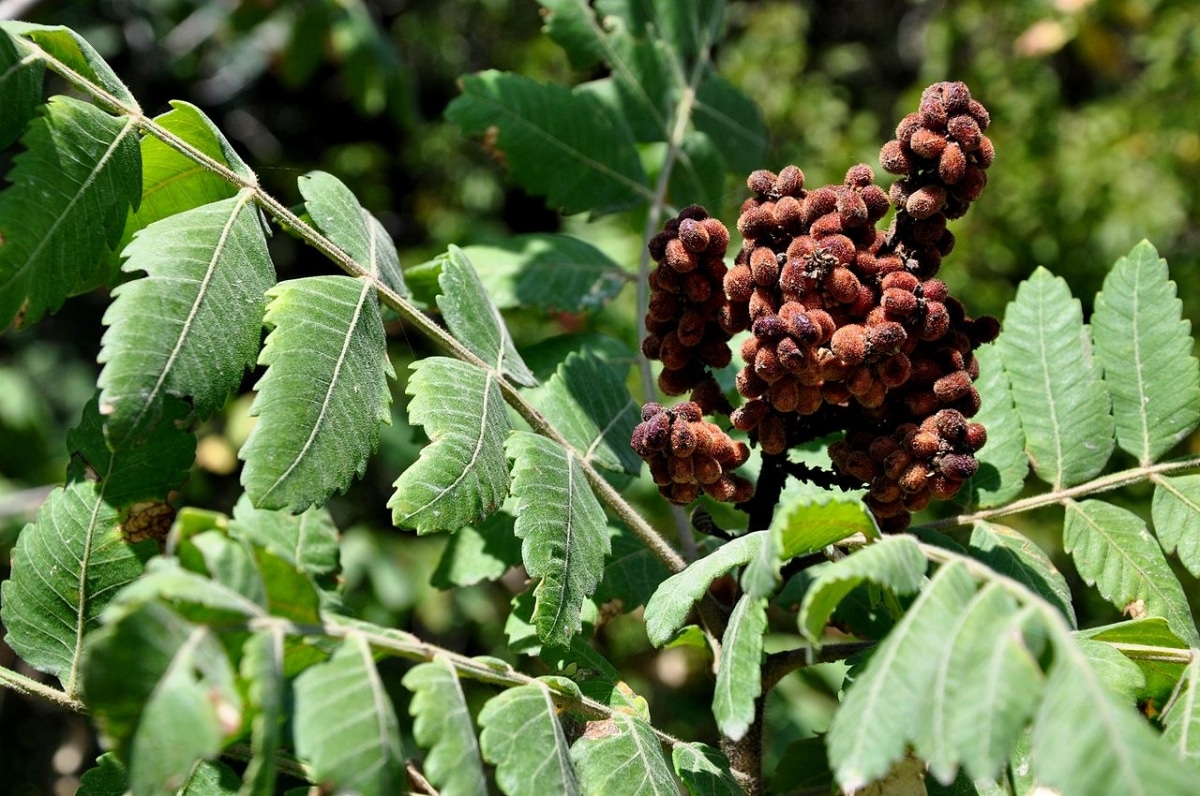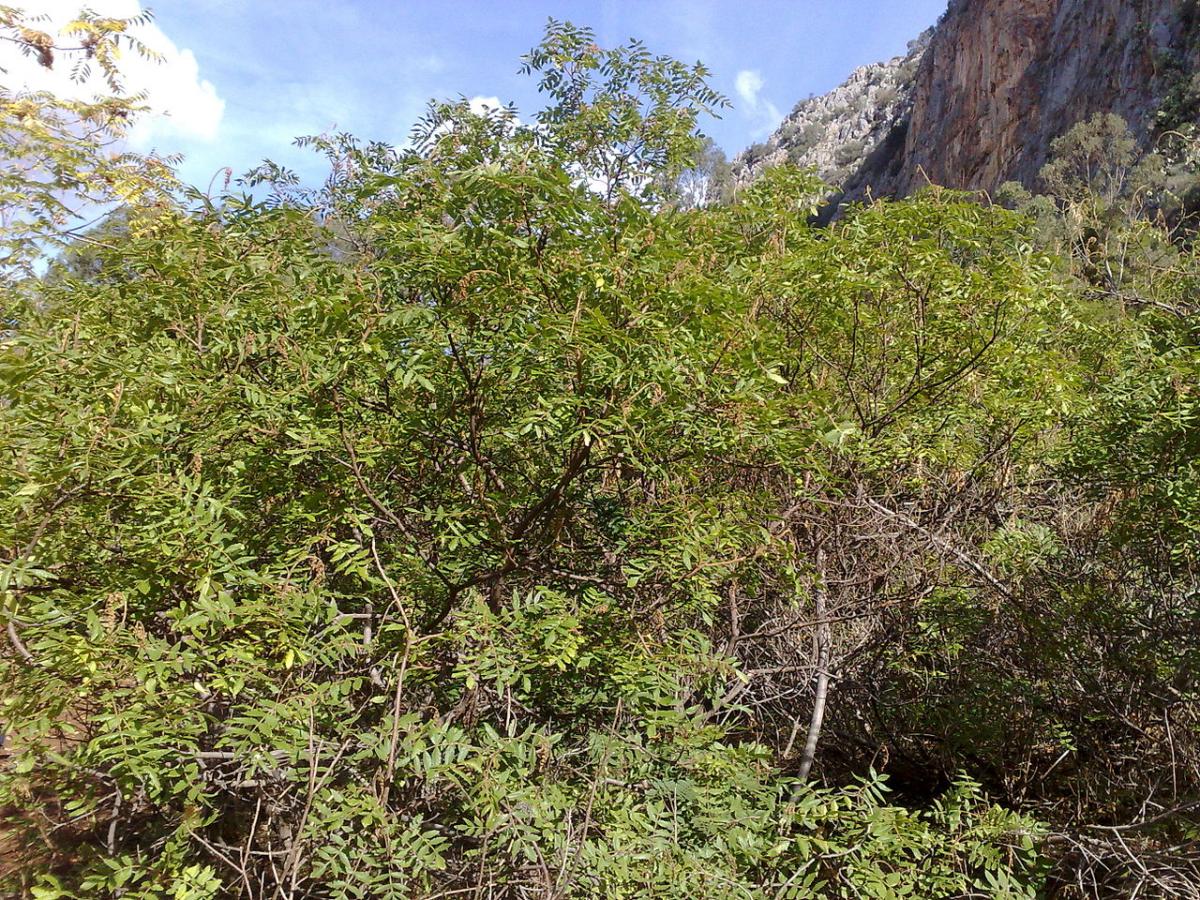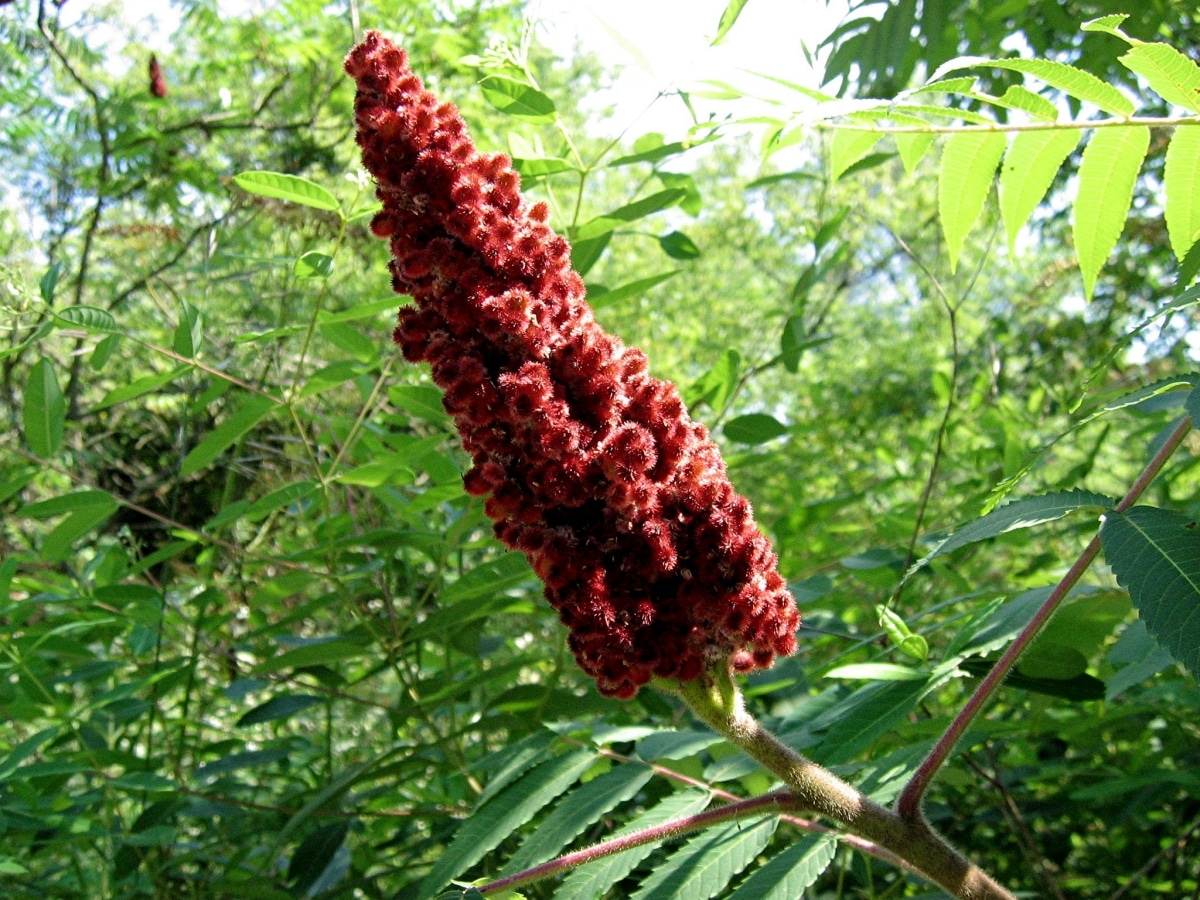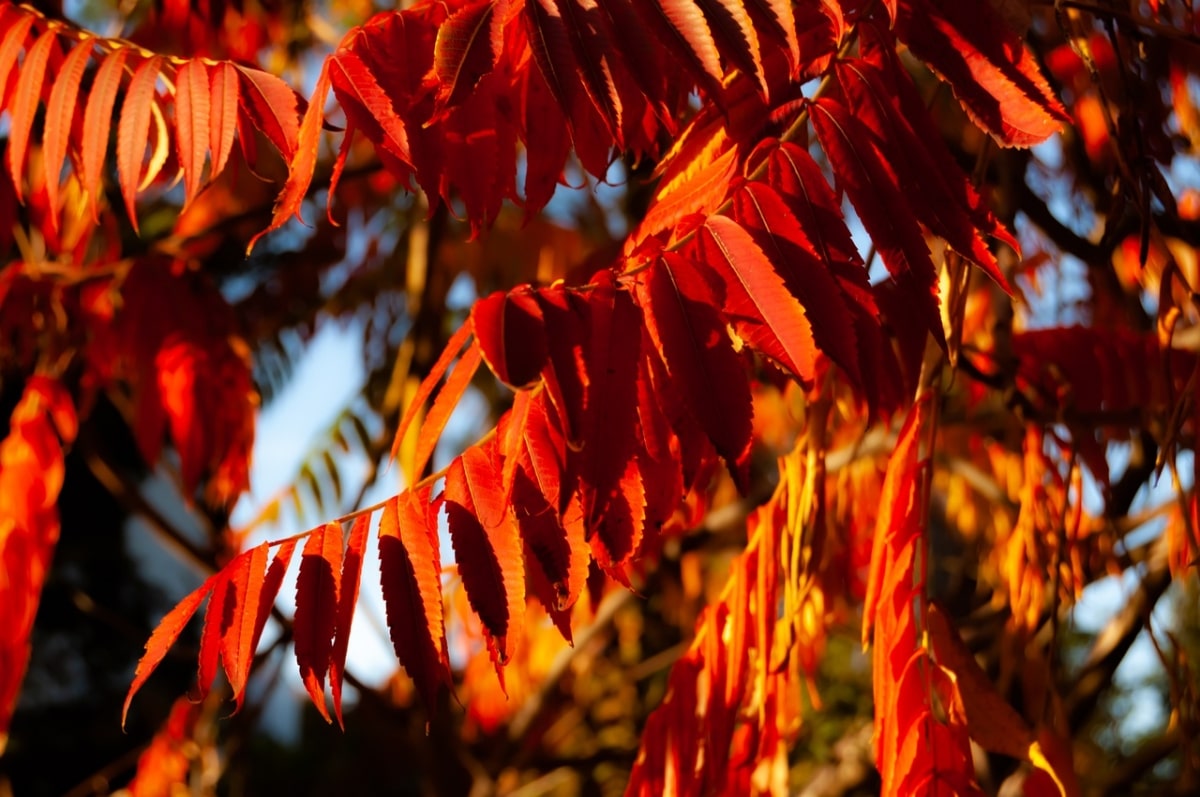
Image - Wikimedia / Lazaregagnidze
The human being has managed to put many uses to a great variety of plants. Some are very obvious, but there are others that may surprise us. Such is the case of the one given to a species of shrub whose scientific name is rhus coriaria.
At first glance it may seem just an interesting plant to grow in a garden, but the truth is that it contains a high content of tannin, which is why it is used in leather tanning. But it doesn't just have that use.
Origin and characteristics of rhus coriaria

Image - Wikimedia / Dedda71
El rhus coriaria, known as sumac, It is a deciduous shrub native to southern Europe that reaches a height of 3 meters. It has pinnate leaves, with a serrated margin, and green in color, although in autumn they turn red. These contain urushiol, which is an oil that can cause irritation and even a rash if it comes in contact with the skin. If this happens, the symptoms usually appear within 24 to 48 hours, so it is advisable to handle the plant with rubber gloves (such as kitchen gloves).
Blooms during spring, producing yellowish and slightly aromatic flowers. Later it produces fruits of a size similar to that of peas, brown or reddish in color.
What is?
It is a very beautiful plant, which has two uses:
- Industrials: before we mentioned that it is used in leather tanning. In fact, it makes it more resistant to direct light. In addition, it is also sometimes used to fix the colors of leather.
- Culinary: the dried ripe fruit is used as a condiment both in fish dishes, in salads and on meat skewers.
- MedicinalRipe seeds can be eaten before a meal to stimulate appetite.
How do you take care of the rhus coriaria?

Image - Flickr / wynjym
It is a fast growing and very rustic shrub that can be kept in a large pot throughout its life, or in small gardens without problems. So if you want to know how to take care of it, write down these tips:
Location
This is a type of sumac that it must be grown in a sunny placeThat is why it is important to have it abroad from day one. Likewise, if you are going to plant it in the garden, you should do it about 2 meters from the wall, since this will make it grow straight and not with the trunk leaning forward.
Earth
Can grow in almost any type of soil, including limestone. But it is important that the water drains well, since excess moisture is fatal for your root system.
In fact, if you prefer to have it in a pot, you have to plant it in one that has water outlet holes at its base, and fill it with growing medium containing perlite, such as this. It would even be very interesting if, before planting it, you put a first layer of volcanic clay or arlite (for sale here) to improve drainage.
Irrigation
You have to water the rhus coriaria often in summer, as this is when temperatures are highest. As usual, you have to do it between 2 and 4 times a week in that season, but everything will depend on the climate of the area and the degree of insolation, since the land does not dry as fast in Córdoba with 45ºC, as in Asturias where the maximum temperature hardly exceeds 30ºC.
To be safe, we recommend using a meter such as this. By introducing it into the ground, it will tell us if it is dry or wet, and with this information we will be able to know what to do next, whether to water or wait a few more days.
The rest of the year you have to space out the waterings more. In fact, it has to be watered 1 or 2 times a week, and even less if it rains.
Subscriber
El rhus coriaria must be paid regularly during the warm months of the year. It is interesting to do it so that the plant can grow healthy, and always look very beautiful. For this, we advise to fertilize it with fertilizers of organic origin, such as guano, earthworm humus or the manure of herbivorous animals, since they are authorized for organic farming by respecting the fauna and flora.
Multiplication
Multiplies by seeds, which have to be sown in autumn or winter. And it is that to germinate they need to be exposed to low temperatures, otherwise they will not be able to sprout.
Therefore, you can plant them in pots, putting two in each. Treat them with a fungicide that contains copper (such as this) so that the fungi do not damage them, and thus they can grow without difficulty.
Rusticity
This is a kind of rhu able to bear the cold very well. Too resists frost down to -5ºC provided they are short-lived. If the specimen is young or of recent acquisition, it is advisable to protect it with a padding during the first winters that it is with us.

What dou you think about him rhus coriaria?